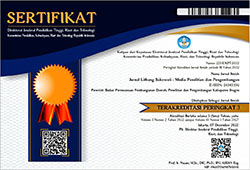INCREASING THE MINIMUM WAGE AS A MEANS OF POVERTY ALLEVIATION
DOI:
https://doi.org/10.32630/sukowati.v7i2.400Keywords:
economic growth, minimum wage, poverty, unemploymentAbstract
Poverty alleviation is one measure of the success of economic development; therefore, this study analyzes the link between the minimum wage and the poverty rate. This study uses secondary data, which includes poverty rate, regency/city minimum wage, economic growth, unemployment rate, and length of road in the Greater Solo. The study period covers conditions from 2010 to 2020. Secondary data was analyzed using a panel data regression model based on Fully Modified Ordinary Least Square (FMOLS) estimation. Primary data from interviews with some development economists supplement the regression results. Preliminary data analysis utilized the Cross-Impact Matrix Multiplication Applied to Classification (MICMAC) method to analyze critical variables in poverty alleviation. The results showed increased regency/city minimum wage is followed by decreased poverty. Meanwhile, an increase in the open unemployment rate impacts an increase in the poverty rate. However, economic growth and the road length do not affect the Greater Solo area's poverty level. Furthermore, the results of the MICMAC analysis show a strong influence of the regency/city minimum wage and the open unemployment rate on the poverty rate. Meanwhile, economic growth and road length do not strongly influence the poverty rate.
Downloads
Published
How to Cite
Issue
Section
License
Copyright (c) 2023 Joko Susanto

This work is licensed under a Creative Commons Attribution 4.0 International License.


















